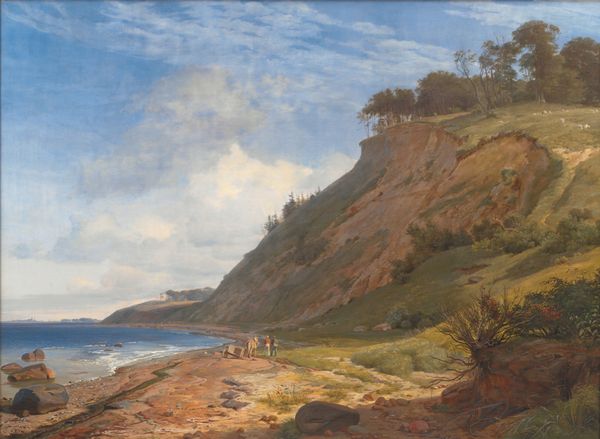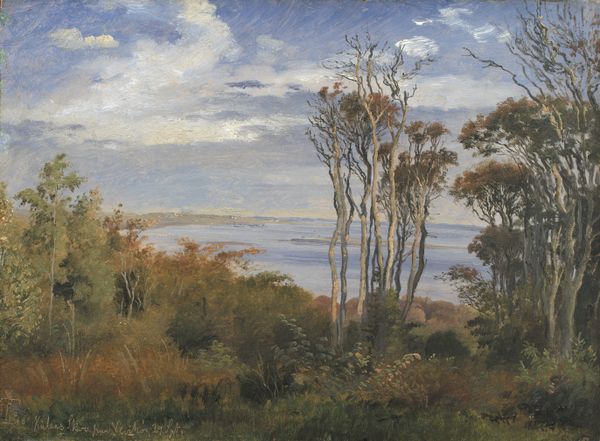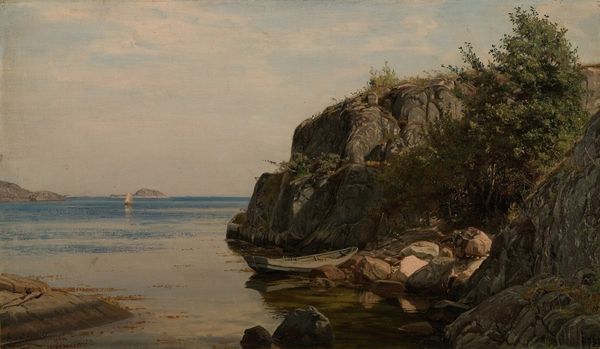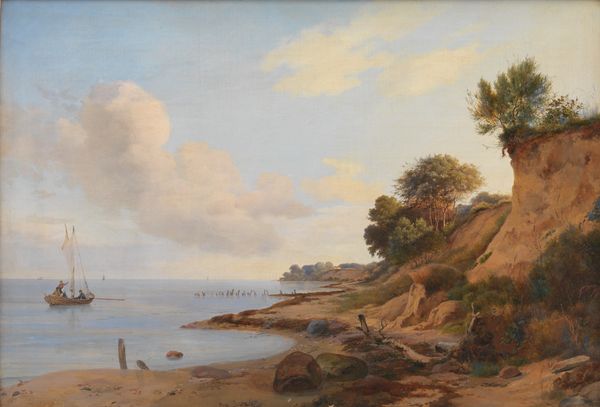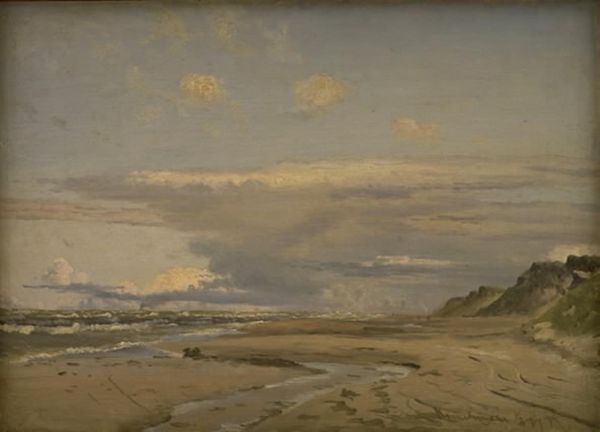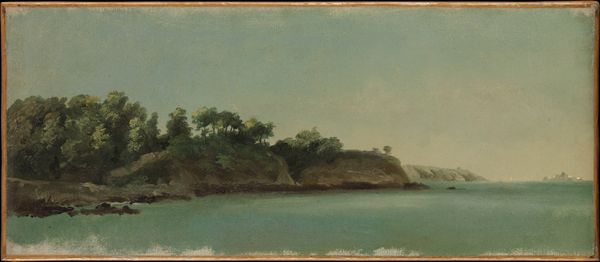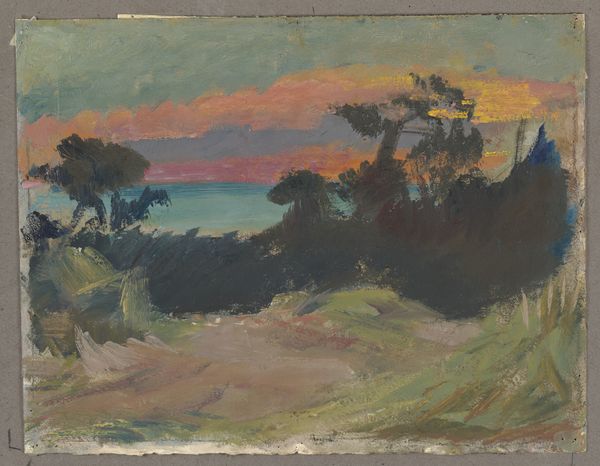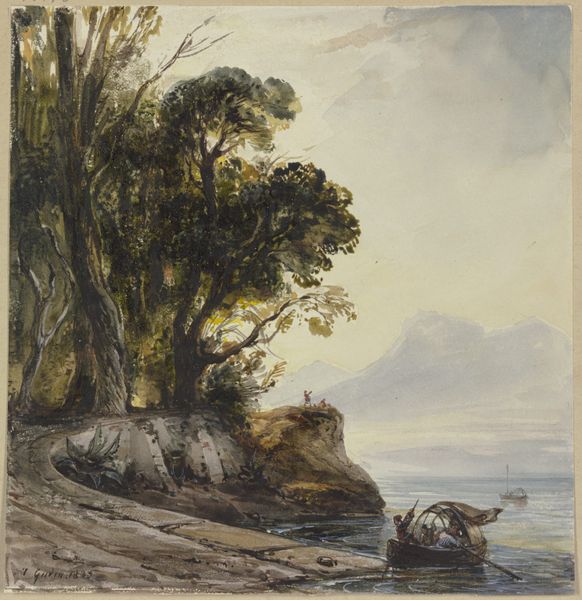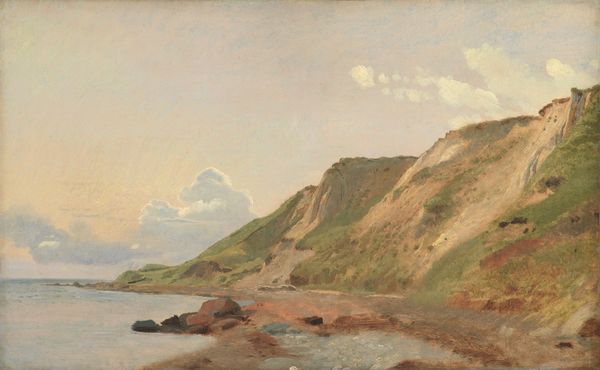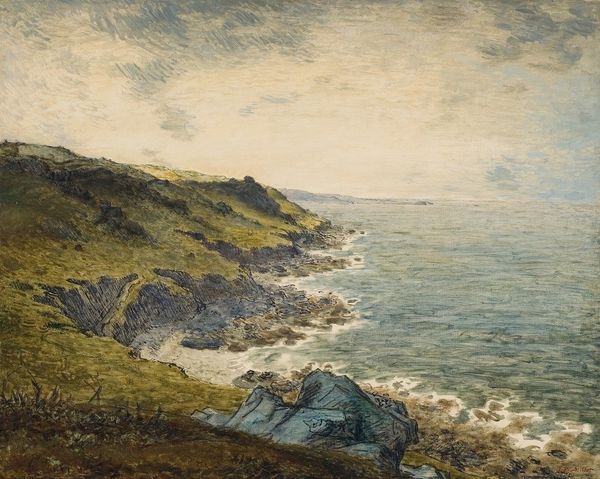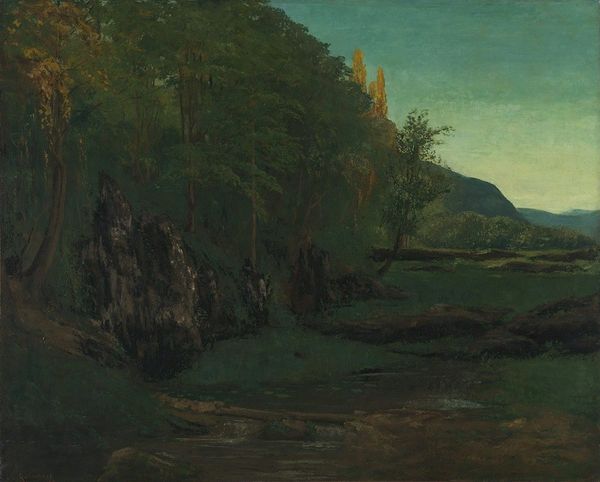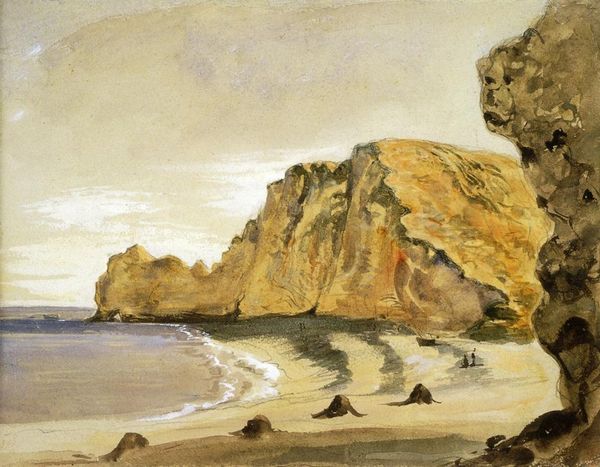
painting, plein-air, oil-paint, canvas
#
painting
#
plein-air
#
oil-paint
#
landscape
#
oil painting
#
canvas
#
romanticism
#
realism
Dimensions: 31 cm (height) x 40 cm (width) (Netto)
Curator: P.C. Skovgaard painted "The Cliffs of the Island of Møn" in 1850. He captured it en plein air with oil on canvas. Editor: It evokes a moodiness, doesn't it? A serene stillness hanging heavy in the air, perhaps suggesting nature's indifference to human presence. Curator: Indeed. The work can be placed within the context of burgeoning Danish nationalism. It highlights Møn’s cliffs as a potent symbol of Denmark's natural beauty. Remember that period’s quest for defining national identity. Editor: Absolutely. And visually, those chalk cliffs loom large, almost iconic in their whiteness. White as a symbolic color in art, traditionally signifying purity and truth, contrasts powerfully against the muted tones. They almost seem to represent an unspoiled vision of Denmark, yeah? Curator: Precisely, which connects to issues of access and ownership when reflecting on landscape art. Who decides whose vision of Denmark, and indeed, whose vision of nature gets privileged and why? Who are these spaces for? And who do they exclude? Editor: Looking closer, I also see a conscious romanticizing. These bare trees are set in the foreground as almost stage props framing the cliffs. It does make me think about the idea of the picturesque and how landscapes were being consumed aesthetically at that time. The path in the lower right brings your eye in, just so. Curator: And it's vital to contextualize Skovgaard's work alongside other cultural expressions from that time, analyzing how popular imagery influenced national self-perception, reflecting hierarchies, gender roles, and even colonial perspectives that landscape painting often silently upheld. Editor: All these visual devices really contribute to the symbolism: of nature, of nation, of an idealized past. He clearly understands that images convey deeper meanings through cultural codes. Curator: He understood landscape wasn’t just topography; it was ideology writ large. Editor: Examining Skovgaard’s choices reminds us just how intertwined art, culture, and societal forces can be. It definitely deepens our relationship to such symbolic sites! Curator: It's precisely through such explorations that art history becomes truly relevant: not just analyzing brushstrokes but deconstructing ideologies.
Comments
No comments
Be the first to comment and join the conversation on the ultimate creative platform.
